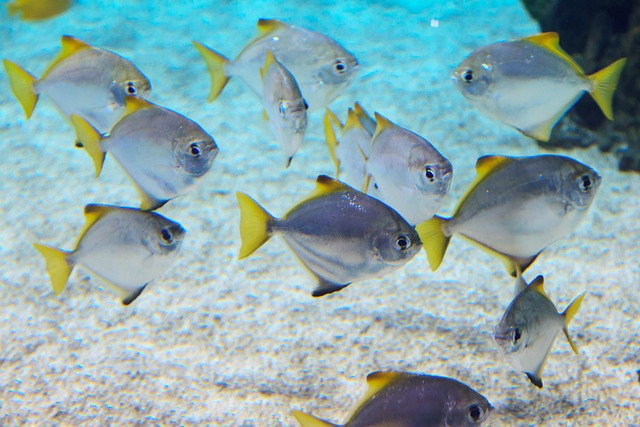Eco-friendly management of silverfish involves a comprehensive approach: maintaining humidity between 35%-50%, regular cleaning, using natural repellents like cedar or lavender oil, deploying sticky traps instead of chemicals, and performing monthly inspections. This strategy creates healthier living spaces, reduces chemical use, benefits sensitive individuals and pets, and discourages long-term pest attraction. Early detection through inspections is key; non-toxic solutions like peppermint oil, diatomaceous earth, or neem oil, along with habitat disruption through sealing entry points and improved ventilation, are effective treatments.
“Keep your properties free from unwanted guests with effective silverfish maintenance programs. This comprehensive guide explores eco-friendly solutions to mitigate these persistent pests. Understanding silverfish behavior and habitat is key to successful prevention. Discover the benefits of adopting green practices for property management, from reducing environmental impact to enhancing tenant satisfaction. Learn practical strategies for regular checks, proper sanitation, and natural deterrents. Additionally, we’ll provide insights into early infestation detection and safe, effective treatment methods.”
Understanding Silverfish: Behavior and Habitat
Silverfish are tiny insects that thrive in humid environments, often hiding in dark corners and cracks. They aren’t aggressive but can multiply rapidly, feeding on starchy materials like paper products, cardboard, and even fabric. Understanding their behavior is crucial when developing an eco-friendly silverfish solution. These creatures are particularly drawn to properties with persistent moisture issues, making them a common pest in kitchens and bathrooms. Regular maintenance involves addressing these habitats by reducing water leaks, improving ventilation, and sealing entry points to prevent new infestations.
Eco-friendly solutions focus on non-toxic methods to control silverfish populations. This includes maintaining a clean environment, using natural repellents like cedar wood or lavender oil, and employing sticky traps as a safe alternative to chemical pesticides. Regular inspections are also vital; identifying signs of an infestation early can prevent the need for more intensive treatment. By combining these strategies, homeowners can effectively manage silverfish without resorting to harmful chemicals, promoting a healthier and more sustainable living space.
Benefits of Eco-Friendly Maintenance Programs
Implementing eco-friendly maintenance programs offers a multitude of benefits, especially in the ongoing battle against silverfish. These natural, non-toxic methods not only promote a healthier living environment for residents but also contribute to a more sustainable and environmentally conscious property management approach. By adopting eco-friendly silverfish solutions, landlords and property managers can create a habitat that deterrs these pests without relying on harsh chemicals.
Such programs prioritize the use of organic repellents, beneficial insects, and targeted treatments, reducing the risk of exposure to toxic substances. This is particularly advantageous for tenants with sensitive skin or respiratory conditions, as well as for pets living in the premises. Moreover, eco-friendly maintenance practices can enhance the overall well-being of a property by fostering a balance within the ecosystem, making it less appealing to silverfish and other pests in the long term.
Practical Strategies for Preventative Care
To keep properties silverfish-free, implementing a robust preventative care program is key. Start by sealing entry points—cracks, gaps around pipes and cables, and windowsills—with caulk or weatherstripping to prevent these pests from finding their way in. Regularly cleaning and vacuuming, especially in areas prone to moisture build-up like bathrooms and kitchens, can help remove food sources and reduce hiding places.
Consider eco-friendly silverfish solutions like natural repellents made from essential oils—citronella, peppermint, or lavender—which can deter these insects without harmful chemicals. Maintaining a balanced humidity level between 35% and 50% through proper ventilation and dehumidity systems also discourages silverfish infestations. Regularly inspecting your property for any signs of an existing infestation is crucial, enabling you to act swiftly with targeted treatments if needed.
Monitoring and Addressing Infestations Effectively
Regular monitoring is key to an effective silverfish control strategy. Property managers and homeowners should inspect areas prone to infestations, such as dark, humid spaces behind walls or under floors, on a monthly basis. Look for signs of an active infestation, like live silverfish, eggs, or shed skins. Early detection allows for swift action, making it easier to eradicate the pests using eco-friendly silverfish solutions.
When addressing infestations, consider non-toxic methods first. Eco-friendly silverfish solutions include natural repellents like peppermint oil, diatomaceous earth, or neem oil. These can be applied in infested areas and around property perimeters to deter silverfish. Additionally, sealing entry points and improving ventilation can disrupt their habitat, making it less appealing for the insects.
Maintaining a silverfish-free property is achievable through a combination of understanding these pests, adopting eco-friendly practices, and implementing preventative care strategies. By choosing green maintenance programs that focus on natural deterrents and non-toxic methods, you can effectively manage silverfish populations while preserving a safe and healthy environment. Embracing these eco-conscious solutions ensures a balanced approach to pest control, benefitting both your property and the planet.
